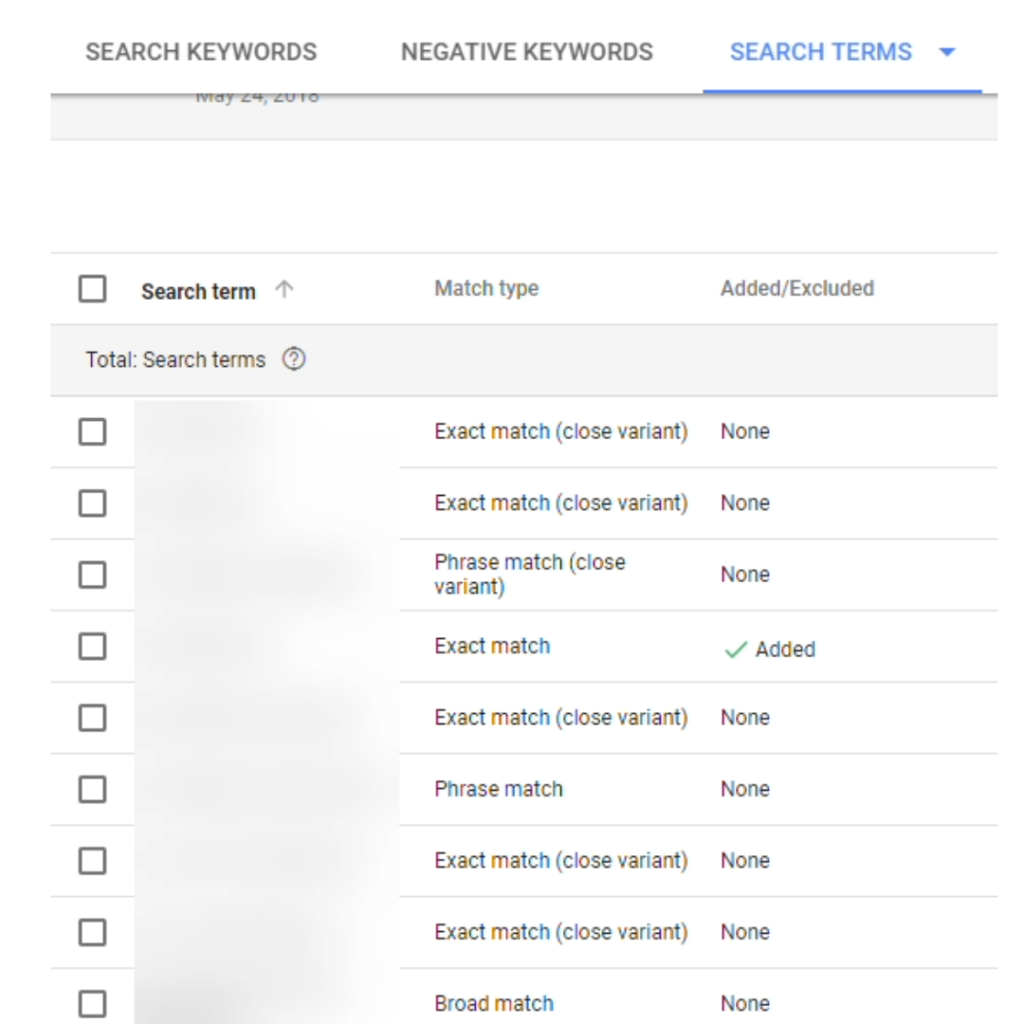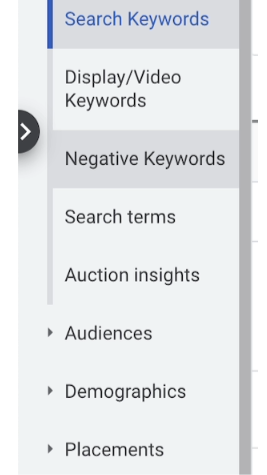Negative keywords are in some ways exactly what they sound like. If normal keywords are those you want to rank for, negative keywords are the ones about which you tell Google “Don’t you dare.” In more normal wording, they’re search terms you wish to be explicitly excluded from your ads campaign.
While your campaigns can sometimes do perfectly fine without negative keywords, there is almost always a way you can tighten up your results and improve efficiency with them. And for some business or product types, they can make a massive difference. That’s because some terms can be relevant to you in some contexts but completely irrelevant in others; you’re trying to get as many of the irrelevant terms — or irrelevant intentions of search users through this proxy — out of the way, so that you’re not bidding on those who aren’t interested.
The example Google gives is if you’re an eyeglass store, in which case you’d want people looking for “glasses” to see your ads, but not people looking for “wine glasses” or “pint glasses.” In this case, you could have not just “wine” and “pint” as negative keywords, but also “red,” “white,” “lager,” “stout,” “stemmed” and so on, that might be associated with the irrelevant intent.
The resulting benefits of negative keywords all lead to a more productive and efficient bottom line. This means:
- Wasting less of your budget on irrelevant searches
- More focused, relevant targeting
- Increased click-through and conversion rates
Altogether, this means spending less on things you don’t want and getting a better return on each dollar spent.
Identifying and implementing negative keywords
The first step — just like with so much search marketing — is keyword research. This includes conducting a search terms report, a tool Google provides to present your search terms’ performance and related data. Google has a support page devoted to the search terms report, but to set it up you just go to your account, click “campaigns,” then “insights and reports,” and then “search terms.”
The report itself will show you a list of search terms with sufficient volume to be significant that have triggered your ads. Part of what makes it especially helpful is that you can segment what you’re seeing by time, device, conversions, and more, helping you better visualize what’s working, what’s not, and what’s somewhere in between.
Further, you can see on search terms reports how search terms are bringing up your ads via the “match type” category — this includes exact match, phrase match, and broad match. These can act as a proxy to give you further insight into your search terms’ success and can sometimes lead you to a new term that should be used as a negative keyword.
Image Source: wordstream.com
During this phase, it’s also helpful to do an analysis of your competitors’ campaigns. Not only is this useful for deciding on negative keywords, but it’s also a step we recommend for many different search and content marketing processes.
Once you’ve decided on terms you want to designate as negative keywords, comes actually implementing these negative keywords.
Negative keywords can be added at the account, campaign, and ad group level, depending on what you’re trying to achieve. Adding one at the account level will apply that across all applicable campaigns in search (as well as across all relevant shopping campaigns if that’s something you use). Google provides a step-by-step guide to this implementation on their support site, but generally, you find the option for “edit exclusions” and go from there.
Image Source: wordstream.com
As a reminder, make sure you don’t accidentally add any negative keywords that are also normal keywords for you — doing so will result in the negative keyword designation winning out, and subsequently block your ads from being shown for those keywords that you want them to show for.
Best practices for getting the most out of your negative keywords
When approaching negative keywords, as with everything digital marketing (and even non-digital marketing, and even just non-marketing life or business stuff), clearly identifying your intent is an important foundation for everything else. Other than general “improved efficiency” this could more specifically include:
- Removing irrelevant search terms
- Excluding irrelevant locations or audiences
- Excluding irrelevant products or services
- Filtering out low- or non-converting keywords
After implementation, like with everything search marketing you should be frequently monitoring the performance of your negative keywords and infer what you can from the resulting analysis. Part of this process includes experimenting with and testing your negative keywords. What’s working? What’s not? What can you learn from both the successful negative keywords and the duds?
This includes regularly reviewing search terms reports and adjusting match types and keyword lists accordingly. As part of this, we also recommend occasionally taking time to look into new potential negative keywords to use. Research, apply, monitor, tweak accordingly, repeat.
Negative keywords are overall an aspect of your search advertising that can really fine-tune your existing efforts. With effective implementation, you’ll see less bidding “dead weight” on your campaigns and subsequently greater efficiency that allows you to do more while spending less.






